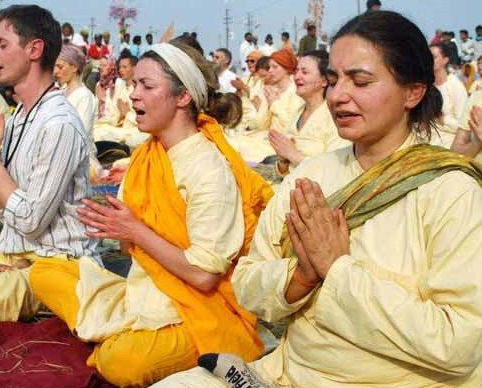” The Puranas have advised Gods to take birth as ordinary humans just to do Kalpvas in Prayagraj. “
What is Kalpvas?
To reside on the banks of Sangam. Starting from the eleventh day of Paush Maha (month) to the 12th day of Magh Maha (month). This period is considered to be equivalent to one day of Brahma ji, also known as kalpa and the punya (blessings accumulated by doing good deeds). However some kalpvasi’s start their kalpvas from Makar Sankranti also. According to the Mahabharata performing kalpvas for a month is to offering prayers for a 100 years without grain.
What do you achieve by observing Kalpvas?
By observing kalpvas an individual can attain mental, physical and spiritual growth. Furthermore It is said that an individual can have his wishes granted and get freedom from life ahead i.e Moksha. In the Puranas it is advised to gods to take birth as ordinary humans just to do Kalpvas in Prayagraj. In the epic Mahabharata, Muni Markandey advises Dharmaraj Yudhisthira that Kalpvas at Prayag not only rids you of all “paap” but ensures heaven for the soul.
.
How long can you do kalpvas?
According to the shastras the minimum period of kalpvas is one night, three nights, three months, six months, six years, twelve years, or a lifetime.
Rules and Guidelines for Kalpvasis
All Kalpvasis must wear white/ yellow / orange clothes only for the period they observe kalpvas. It starts with the planting of Jau, prayer to the tulsi plant, prayer to the shaligram and then follows the guidelines given by Maharishi below.
According to Maharishi Dhatatreya anyone observing a 45 days kalpvas must observe the following 21 guidelines.
- Speak only truth
- Observe non violence
- Control of all senses
- Maintain mercy on all living beings
- Follow Brahmcharya, also known as the middle path of restraint,
- Addiction renunciation
- Wake up 1 hr 36 minutes before sunrise known as Brahm Muhrat
- Religiously bath in the river 3 times daily
- Trikal Sandhya prayers of Gayatri Mantra are offered in Pratah (morning), Mahyamika (Noon) and Sayam (evening)
- Pitro ka Pind Daan (By performing the rituals as per ancient texts and paying homage to the deceased ancestors, the dead soul attains mokhsa (salvation)
- Practice donations
- Antarmukhi Jaap (Look introvertly for peace and satisfaction)
- Satsang (“gathering together for the truth” or, more simply, “being with the truth.” Truth is what is real, what exists.)
- Don’t step outside the Kalpvas (Mela) area
- Appreciate everyone
- To be eagerly involved in the service of saints and seers
- Take part in pujas by chanting and reciting religious hymns
- Eat only once in a day
- Bhumi Shayan (must be followed)
- Agni Sevan ( Aag Tapana, to sit around bornfire)
- Dev Pujan (Dev ki puja niyamit)
Out of these five are considered to be of supreme significance namely Fifth – Brahmacharya, Eleventh – Donations, Seventeenth – Chanting & Reciting, Eighteenth – Eating Once a Day, Twenty first – Worship God Daily.

